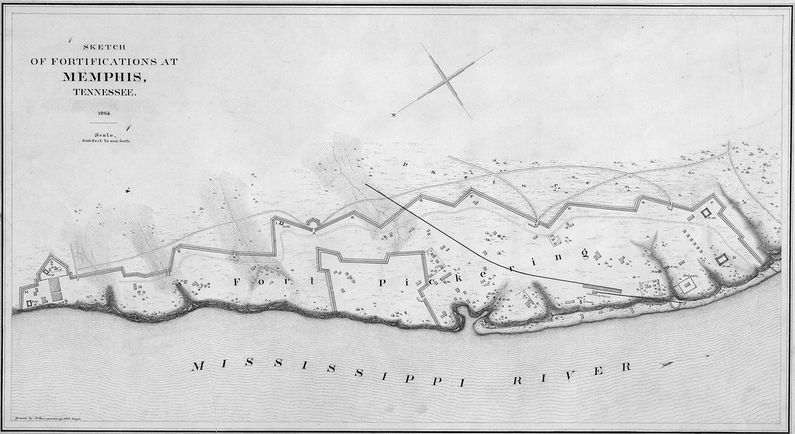Fort Pickering (2)
|
Fort Pickering (2) (1801-1812, 1861-1866) - A U.S. Army post established in 1801 by Captain Zebulon M. Pike in Shelby County, Tennessee. Named for Timothy Pickering, U.S. Secretary of State (1795-1800) under Presidents George Washington and John Adams. Initially abandoned in 1806 but rebuilt and expanded during the U.S. Civil War. Replaced Fort Pike soon after the Louisiana Purchase. HistoryEstablished by Captain Zebulon M. Pike in 1801 when he relocated nearby Fort Pike to a new site further up the Mississippi River. The post was visited by Lewis & Clark on their return trip where they were hosted by commandant Zachary Taylor. Lewis spent some time thereafter their return before his untimely death. Captain Gilbert Russell was the commander of Fort Pickering when Lewis spent two weeks there in September 1809. Lewis died under mysterious circumstances 11 Oct 1809 after leaving Fort Pickering. The post was abandoned about 1812 and became the Chickasaw Indian Agency from 1814 - 1818. U.S. Civil War (1861-1865)
Confederate forces occupied the site of old Fort Pickering and utilized two old Indian mounds as redoubts; the largest Mound was used as a four-gun redoubt with an interior magazine and the smaller was used as a three-gun redoubt. Union forces captured Memphis in June 1862 and greatly expanded the earthworks to enclose the old fort and the new Union support facilities. Memphis was ringed with Union batteries and redans. The fortifications were abandoned soon after the end of the war in 1866. Current StatusTraces of the Union earthworks still exist in Crump and De Soto Park in Memphis, Shelby County, Tennessee. Remains of a magazine can be seen in one of the Indian mounds in De Soto Park.
See Also:
Sources:
Links: Visited: 29 Aug 2020
|